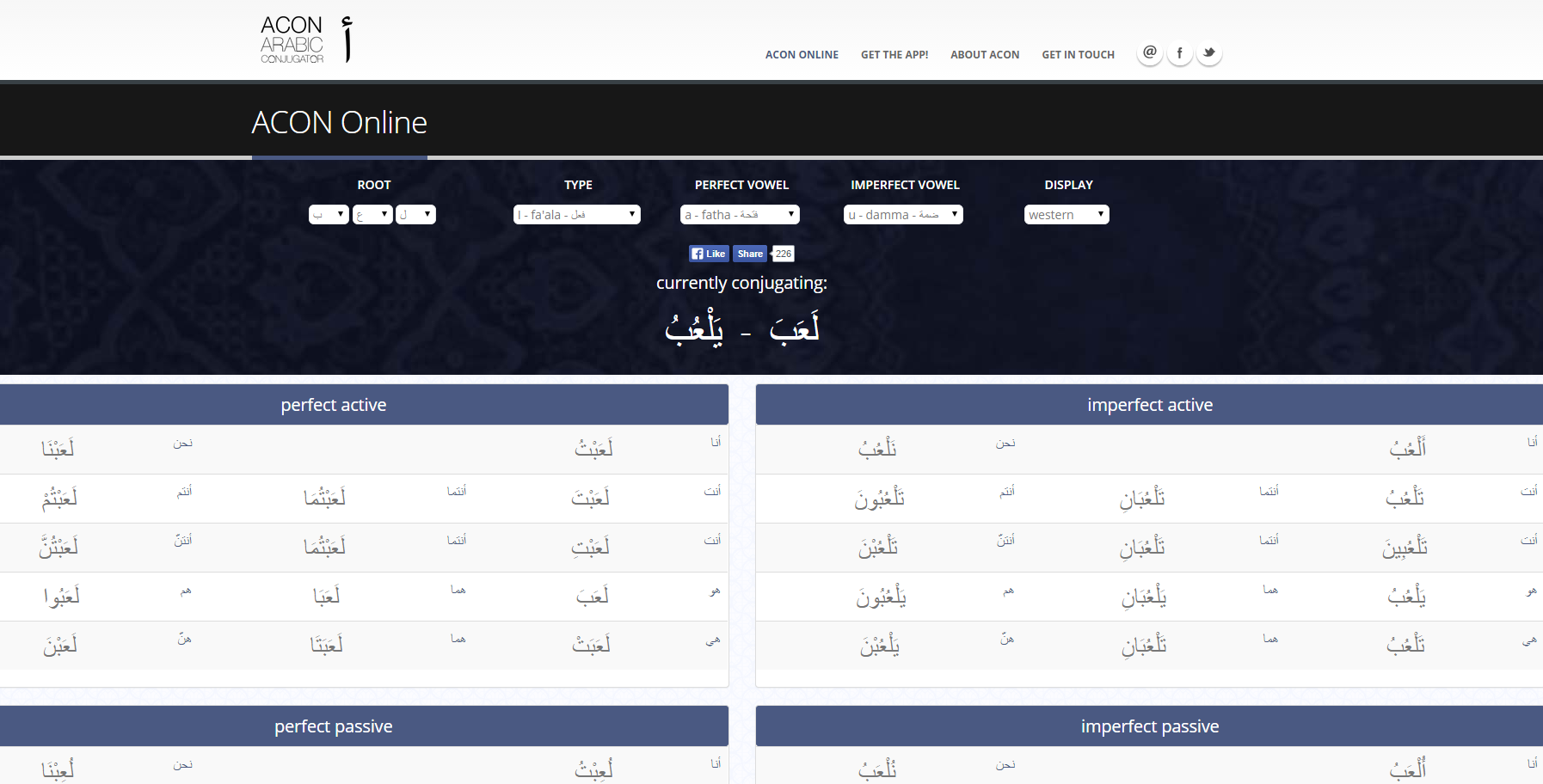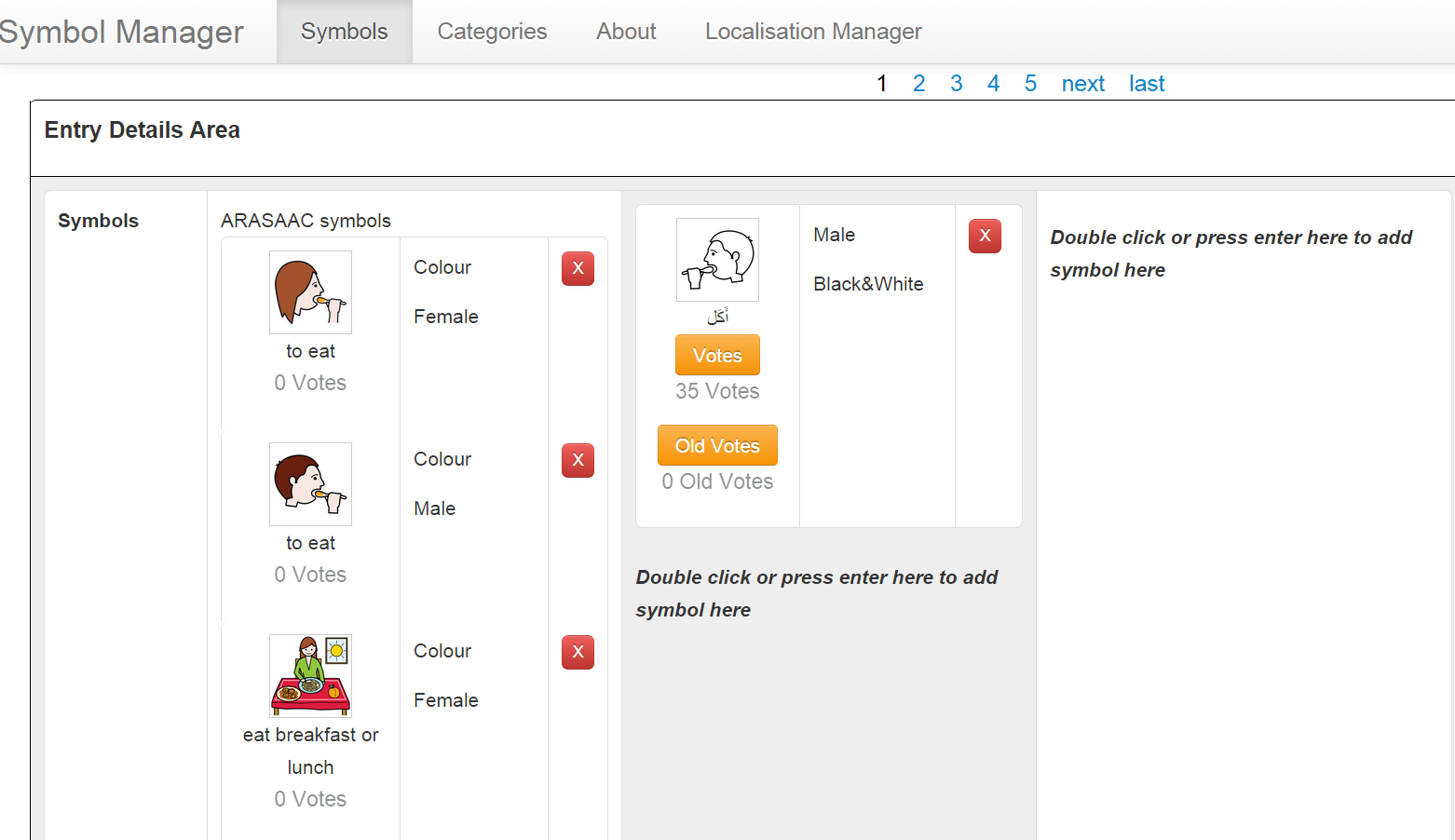It seems amazing that one can spend over a month discussing the intricacies of verbs and how they should be represented in our Arabic / English Symbol dictionary. The team have reached what Speech Therapists may describe as Brown’s stage 2, where we are learning how to represent more grammatical structures from verb tenses to plurals and simple multiword phrases. These can be difficult to translate into representative symbols as well as work across two very different languages. Yet if AAC users are to be able to make use of a core vocabulary and start to develop real language and literacy skills they must be available in any symbol dictionary that is going to be useful.
In English we tend to accept that the verb will be seen initially in the present tense so one would search for ‘play’ as the root word in for example the Oxford English Dictionary . However, in Arabic dictionaries such as The Dictionary of Modern Written Arabic compiled by Hans Wehr and edited by J Milton Cowan which has been reviewed as one of the best Arabic English dictionaries by Sa’id (1962) lists of action words are based on the root of the verb usually the imperfect, as an action happening in the past ’ لعب ‘ . This root of three consonants, can then be easily conjugated (if it is regular) with a series of vowel changes and additional prefixes and/or suffixes. http://acon.baykal.be/
So the first dilemma is how do we present our lexical entries – Should the English be in the past or the present? Should the symbols all have additional elements that illustrate the past as their main entry – going from Arabic to English?
 How do we represent the past and the future when the writing is going from right to left – is the arrow for past going from right to left or left to right? Widgit offer a very good example of how this is achieved in English with their symbols.
How do we represent the past and the future when the writing is going from right to left – is the arrow for past going from right to left or left to right? Widgit offer a very good example of how this is achieved in English with their symbols.
Google offer an example of how this should be achieved on applications and the web when there is a discussion about bi-directionality. In Arabic we will need to mirror all the indicators of past and future as well as any diagonal marks. So lines originally coming from top left down to right will need to change to top right down to left.
In terms of mirroring actions it will depend on what the person is doing but discussions around Arabic etiquette are being represented throughout the symbols with right hand use for anything to do with food and drink and other appropriate actions.
Verbs also have gender specific spellings so representing the word as a symbol – should the verbs have boys or men as well as girls or females carrying out the actions. It may not be possible to have just the one version or a stick figure if we are supporting literacy skills and yet for those who are just getting to grips with AAC clarity and uncluttered symbols will be essential.
There are similar issues with singular and plural – can one just add the equivalent of +s as in ARASAAC symbols or a ++ as in Widgit – neither are needed if the image illustrates the fact that there are more than one. So how relevant are these extras, do they help when teaching concepts for literacy skills? How do we show this change of status in Arabic where plurals are different for male and female individuals – teachers – معلمات معلمون and then inanimate objects for example tables – طاولات and table – طاولة
Finally (for the moment) in Arabic an adjective can change its spelling to fit the noun it follows and just as in English there are irregular words and irregular ways of changing them. So developing guidelines as to how these things will best be represented in symbols is challenging as we reach over 800 Arabic lexical entries!
References
Brown, R. (1973). A first language: The early stages. London: George Allen & Unwin.
Sa’id M, F., (1962) Review of The Dictionary of Modern Written Arabic is an Arabic-English dictionary compiled by Hans Wehr and edited by J Milton Cowan. Language, Vol. 38, No. 3, Part 1 (Jul. – Sep., 1962), pp. 328-330 Published by: Linguistic Society of America. http://www.jstor.org/stable/410799 Accessed: 23 March 2015




